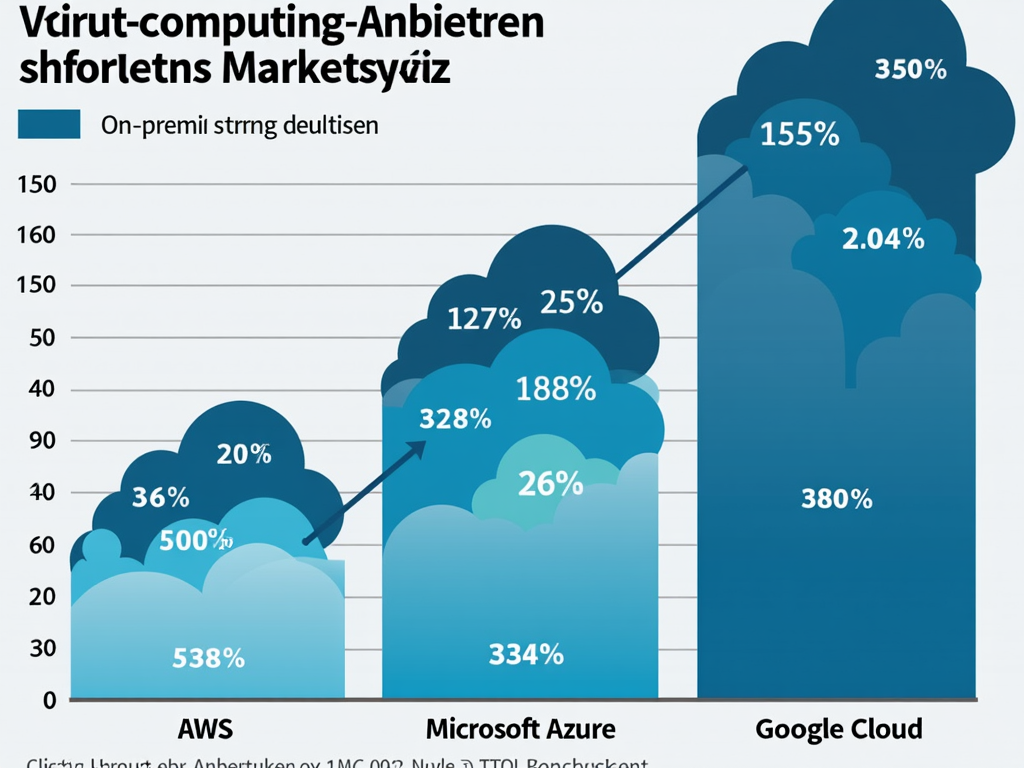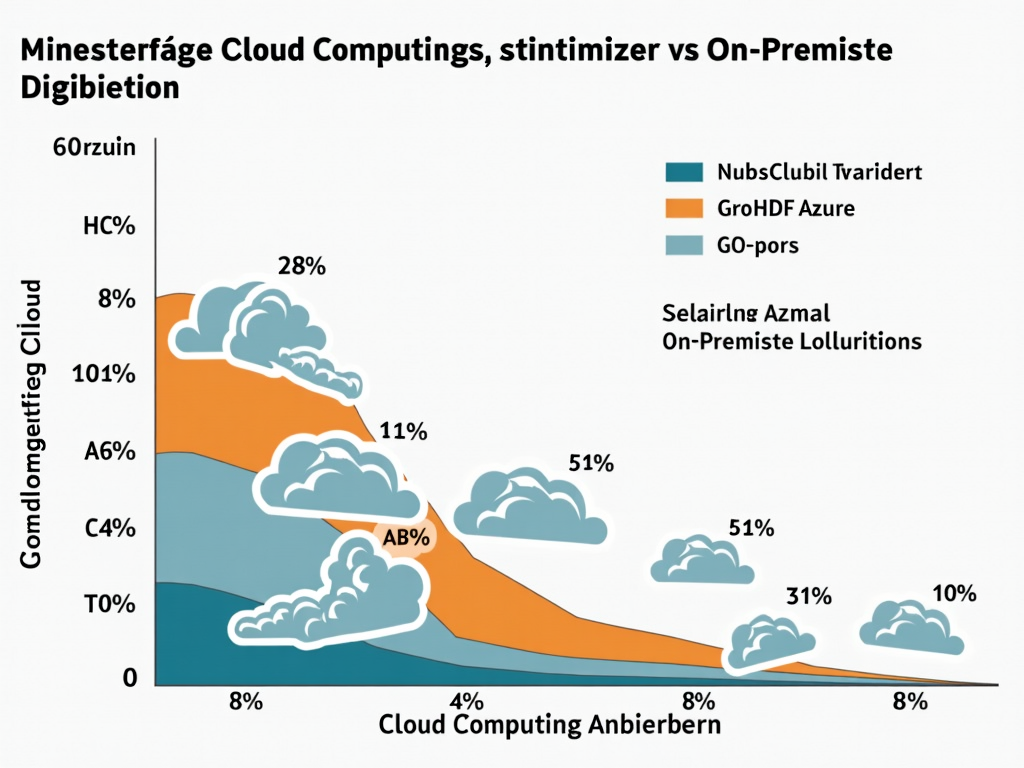The digital landscape is changing, with cloud computing providers like Amazon Web Services, Microsoft Azure, and Google Cloud leading the race. As these giants continue to gain market share, traditional on-premise solutions are losing ground, yet remain relevant in critical sectors for security. This article explores the current market distribution and analyzes how future technologies and strategies could further shift the balance.
Cloud Dominance: Market Leadership and Its Challenges

The competition between cloud computing providers and traditional on-premise solutions shows a clear shift towards the former. The market landscape is characterized by the dominant presence of Amazon Web Services (AWS), which, with a remarkable 30% market share in the fourth quarter of 2024, sits at the top. AWS’s early entry and vast service portfolio have significantly contributed to its dominant position.
Microsoft Azure follows as a serious competitor with a 21% market share. The integration of advanced AI services like GPT into the Azure platform has bolstered Microsoft’s position in the business context, fostering growth. Google Cloud secures third place with a 12% share and is investing heavily in AI technologies to further expand its presence.
The decreasing relevance of on-premise solutions is undeniable. Their importance remains primarily where specific data sovereignty and security requirements play a crucial role. Particularly in regions with stringent data protection regulations, companies frequently opt for on-premise installations. The advantage here is clear: complete control over data and infrastructure. However, this often entails higher initial investments and limited scalability compared to flexible cloud solutions.
The continuous growth in the cloud sector, supported by the increasing proliferation and investment in AI technologies, shows that hyperscalers like AWS, Microsoft, and Google are determined to maintain their market shares through continuous innovations. At the same time, hybrid cloud strategies are gaining importance, allowing companies to gain flexibility while minimizing risks.
Market leadership in the cloud is dominated by economies of scale but also raises high expectations regarding continuous investments in infrastructure. Here, competition in artificial intelligence is a critical element that forces providers to constantly evolve and deliver innovative solutions to remain competitive in this dynamic market.
Growth Strategies and Future Prospects for Cloud and On-Premise Solutions

The competition between cloud computing providers and on-premise solutions challenges companies to make wise decisions that have profound implications for costs, scalability, and security. At the center of these decisions are future prospects and growth strategies, which are crucial for survival in a rapidly changing technology market.
Cloud computing providers offer clear advantages ranging from scalability and flexibility to cost-effectiveness and automatic maintenance and updates. The ability to quickly adapt resources is particularly valuable for companies with dynamic workloads. Cloud platforms reduce initial investments through the ‘Pay-as-you-go’ model and relieve companies of the burden of infrastructure maintenance. However, vendor lock-in remains a serious consideration, as do data protection and compliance in light of evolving privacy regulations. Looking ahead, it is clear that the cloud market will continue to grow exponentially with investments in artificial intelligence (AI) and supercomputing-as-a-service.
On the other hand, on-premise solutions remain an attractive choice for areas with high data protection requirements, as they offer complete control over IT infrastructures. Ensuring independence from internet connections or external vendors is particularly compelling when it comes to sensitive data. Despite high initial investments, operational costs can be more easily planned long-term, but limited scalability restricts possible growth strategies. Driven by strict data protection regulations, the relevant solutions remain relevant in certain regions and sectors.
Hybrid approaches that combine the advantages of cloud and on-premise solutions enable sensitive data to be managed locally, while other data can be scaled in the cloud. Investments in AI-powered cloud services and supercomputing offer additional growth opportunities. A strategic adjustment to data protection laws, such as the General Data Protection Regulation (GDPR), is essential to ensure compliance with requirements. A thorough cost analysis is crucial for fully understanding the total cost of IT decisions.
In summary, cloud computing providers and on-premise solutions offer different advantages and challenges depending on the specific needs of the business. The combination of both technologies could prove promising in meeting both efficiency and security requirements.